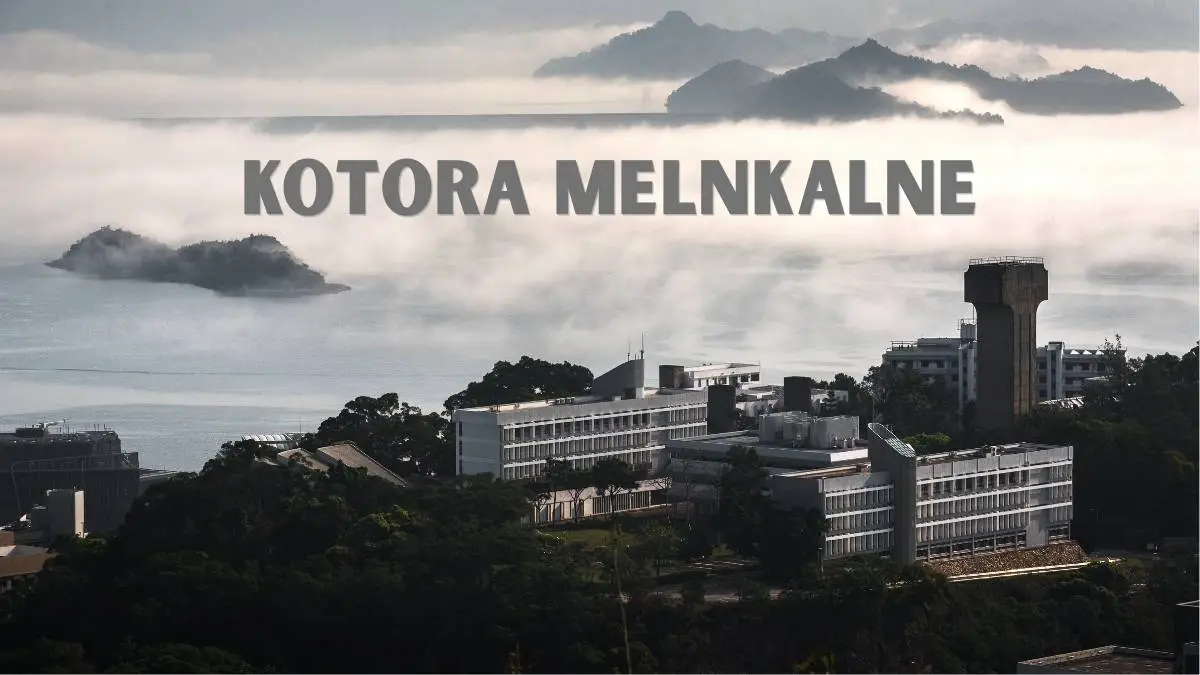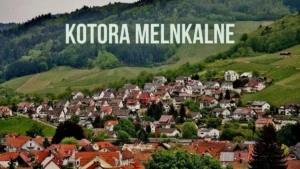Travel
Kotora Melnkalne: Poetic Symbol of Kotor, Montenegro

Kotora Melnkalne is a poetic and evocative name for the historic town of Kotor in Montenegro, blending the lyrical form Kotora with Melnkalne, meaning dark mountain. This phrase reflects both the dramatic cliffs of the Bay of Kotor and the essence of Montenegro itself, Crna Gora or Black Mountain. A UNESCO World Heritage Site, Kotor is celebrated for its medieval architecture, Venetian fortifications, cultural traditions, and breathtaking natural setting, making Kotor a Melnkalne not just a name, but a timeless metaphor for resilience and beauty.
The Etymology and Symbolism of Kotora Melnkalne
The phrase unites two powerful linguistic and symbolic layers:
- Kotora: A lyrical variation of Kotor, softening the sound and giving it a romantic quality often used in poetry, literature, and travel writing.
- Melnkalne (Dark Mountain): Resonates with the very name of Montenegro, derived from Venetian and Latin roots describing the dark, forested mountains that dominate the Adriatic landscape.
Together, Kotora Melnkalne represents Kotor as a coastal jewel under the shadow of rugged cliffs, a city where light and darkness, history and mystery coexist.
A Jewel of the Adriatic
Nestled along the Bay of Kotor, often called the southernmost fjord in Europe (technically a ria), Kotor blends natural beauty with historical depth:
- A Natural Fortress: Towering cliffs form a natural amphitheater, protecting the bay and shaping Kotor into a strategic maritime stronghold.
- Medieval Townscape: Narrow alleyways, stone squares, and sunlit cafés create a living museum atmosphere.
- Venetian Influence: Centuries of Venetian rule (1420 to 1797) left behind palaces, churches, and defensive walls that today define Kotor’s skyline.
Together, these elements make Kotora Melnkalne feel like a poem etched in stone and sea, rather than just a town.
Layers of History in Kotor
Kotor’s strategic Adriatic position has made it a crossroads of empires:
- Roman Foundations: A fortified port during the Roman Empire.
- Byzantine & Slavic Influence: Shaping its Christian and cultural identity.
- Venetian Rule: Nearly four centuries of Venetian governance created the iconic fortifications climbing Mount Lovćen.
- Ottoman Resistance: Despite repeated incursions, Kotor remained independent, a testament to its defensive strength.
This historical depth reinforces the symbolic resonance of Kotora Melnkalne as a city that endured, adapted, and thrived.
Cultural Significance and Living Traditions
Kotor is not frozen in the past; it remains a vibrant cultural hub. Its festivals and traditions give Kotora Melnkalne a living identity:
- Festival of Boka Navy: UNESCO-recognized maritime brotherhood with parades, costumes, and music.
- Kotor Carnival: A colorful celebration echoing Venetian traditions with masks and performances.
- Klapa Singing: Traditional Adriatic a cappella harmonies passed down through generations.
These traditions transform Kotor from a preserved heritage site into a living cultural stage.

Architectural Elegance
Every step in Kotor’s Old Town feels like walking through history:
- Cathedral of Saint Tryphon (1166): Romanesque architecture and sacred relics of Kotor’s patron saint.
- Maritime Museum of Montenegro: Preserves the seafaring heritage of the Bay of Kotor.
- Kotor Fortifications: Nearly 4.5 km of walls stretching up to San Giovanni Fortress, offering breathtaking Adriatic views.
- Venetian Palaces: Pima, Drago, and Grgurina Palaces display Gothic, Baroque, and Renaissance styles.
The blend of architecture with dramatic cliffs and shimmering sea is the essence of Kotora Melnkalne.
The Natural Grandeur of the Bay of Kotor
The Bay of Kotor is among Europe’s most spectacular natural settings:
- Fjord-Like Beauty: Steep limestone cliffs create a dramatic, fjord-like landscape.
- Shimmering Waters: The Adriatic reflects hues of turquoise and sapphire.
- Biodiversity: Rich marine and coastal ecosystems add ecological value to the region.
The natural surroundings make Kotora Melnkalne a fusion of geography and culture, where land and sea mirror history and poetry.
Kotor in the Modern World
In the 21st century, Kotor has become one of Europe’s most sought-after travel destinations:
- Tourism & Preservation: UNESCO and local authorities balance heritage preservation with tourism growth.
- Cruise Ship Debate: Rising cruise traffic fuels economic growth but raises sustainability concerns.
- Global Recognition: Consistently featured in international travel guides and documentaries.
Kotora Melnkalne thus embodies both authentic tradition and global relevance.
Kotora Melnkalne as a Symbol
The phrase holds lasting symbolic meaning:
- Resilience: Withstanding invasions and natural challenges.
- Mystery: Narrow alleyways and mountain shadows evoke curiosity.
- Timeless Beauty: A living reminder of Adriatic charm untouched by haste.
Kotora Melnkalne is more than a poetic name. It is a metaphor for endurance, beauty, and cultural soul.
Practical Travel Insights
For travelers inspired by Kotora Melnkalne, Kotor offers unforgettable experiences:
- Best Time to Visit: Spring and autumn for mild weather and fewer crowds.
- Climbing the Fortress: Sunrise or sunset hikes reward with panoramic views.
- Cuisine to Try: Njeguški pršut (smoked ham), Adriatic seafood, and rakija (fruit brandy).
- Nearby Excursions: Visit Perast, explore Budva’s coast, or discover Herceg Novi.
These experiences bring the poetic imagery of Kotora Melnkalne to life.
FAQs
Q1. What does Kotora Melnkalne mean?
It combines Kotora (a lyrical form of Kotor) with Melnkalne (“dark mountain”), symbolizing Kotor beneath Montenegro’s dramatic cliffs.
Q2. Why is Kotor famous?
Kotor is a UNESCO World Heritage Site known for its medieval Old Town, Venetian fortifications, cultural festivals, and the Bay of Kotor’s natural beauty.
Q3. Is the Bay of Kotor a fjord?
It looks like a fjord but is technically a ria, a river valley submerged by the Adriatic Sea.
Conclusion
Kotora Melnkalne is more than a poetic expression; it is a lens through which Kotor can be rediscovered. From its UNESCO-protected Old Town and Venetian walls to its cultural festivals and natural bay, Kotor reflects a harmonious blend of history, culture, and geography. It stands as a living poem of resilience and beauty, a timeless jewel of the Adriatic.
-

 BIOGRAPHY7 months ago
BIOGRAPHY7 months agoBehind the Scenes with Sandra Orlow: An Exclusive Interview
-

 HOME1 year ago
HOME1 year agoDiscovering Insights: A Deep Dive into the //vital-mag.net blog
-

 HOME1 year ago
HOME1 year agoSifangds in Action: Real-Life Applications and Success Stories
-

 BIOGRAPHY1 year ago
BIOGRAPHY1 year agoThe Woman Behind the Comedian: Meet Andrew Santino Wife




























